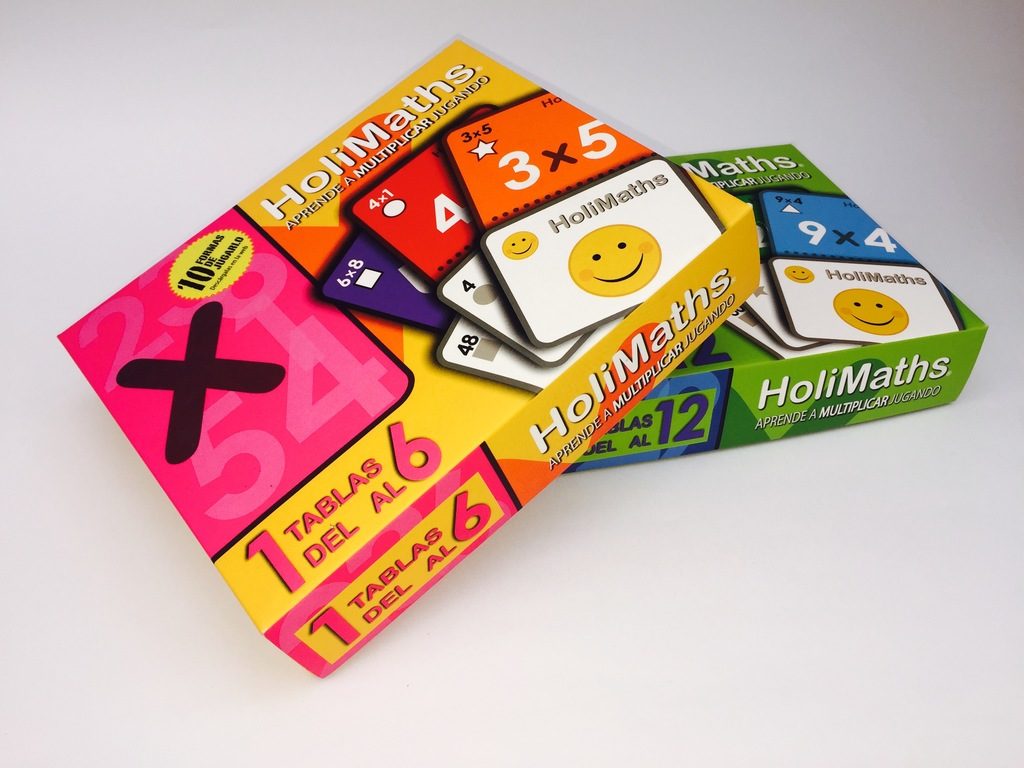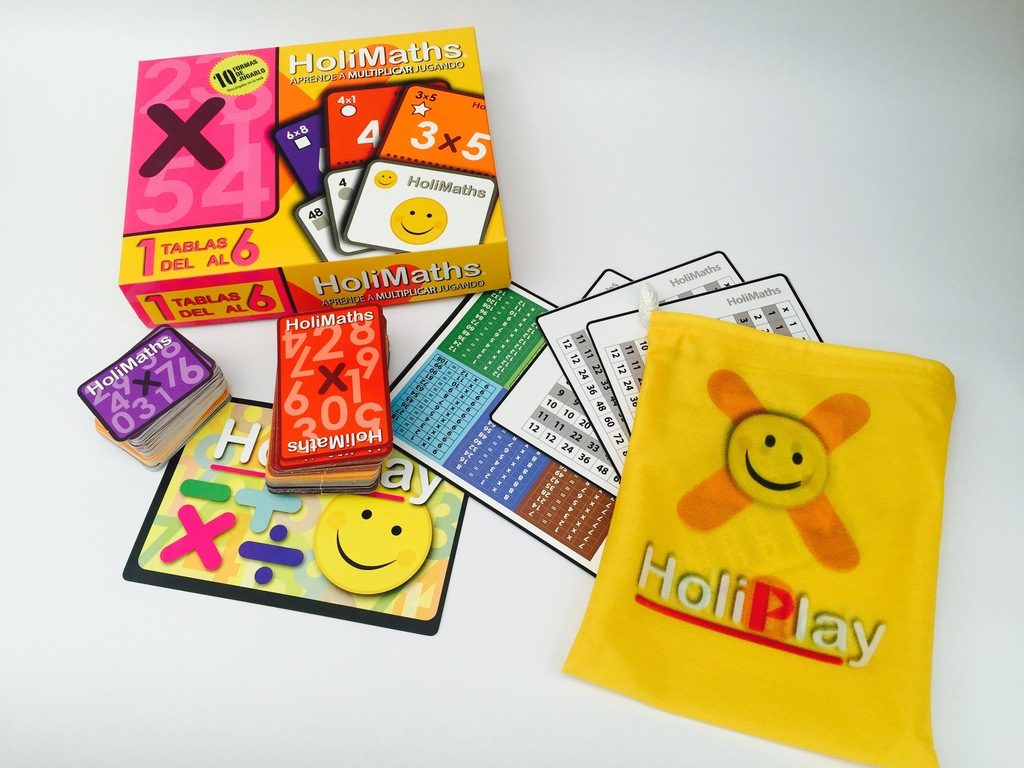As both an adult and a parent, I recognize how important a solid education is in the grand scheme of things. Sure, I haven’t used the Quadratic Formula since High School, but I have had to use basic math on a regular basis…especially with some of the Euro-tabletop games I play. I’m also an accountant, so there’s that too. That’s why I enjoy playing educational games that test these skills, especially with those who still have their whole life ahead of them (like my kids). “HoliMaths X”, a 1-6 player game that’ll be launching on Kickstarter in September of 2016, is one such item that focuses heavily on multiplication. Before we begin, I’d like to thank Matt Roman from HoliPlay Games for sending me a prototype for preview purposes. It’s important to stress that prototypes are not reflective of the final product, making everything you read about here (including the rules) subject to change.

One of the things that impressed me right away about “HoliMaths X” was that there wasn’t just one way to play…rather, the game comes with ten different ways to play. My prototype copy was in Spanish, though the ten English PDF files I received averaged between two and four pages each. Each one also had a convenient YouTube video walkthrough link that helped me visualize what each game was all about. The prototype itself came with 72 Problem Cards, 72 Solution Cards, 6 Problem Wild Cards, 6 Solution Wild Cards, 3 Help Cards that contain all of the multiplication tables, 1 Grid Help Card, 1 Scoring Card, 1 Magic Solution Bag, and 1 Community Card.
My previews normally consist of me detailing the rules of the game I’m covering, though in this case, I’ll opt to give you a brief look at some of the ten variants in order to keep this article at a respectable length. As such, these overviews will not cover everything found in their respective rulebooks. However, I did link the first “Original” variant’s video at the end of this article so that you could follow/subscribe to the developer’s YouTube channel in order to see more information on each of the ten variants.

—
Original – As the name implies, this is the main version of the game. Players draw a hand of six problem and six solution cards after shuffling each separately. On a player’s turn, they’ll draw a problem card and a solution card, then attempt to make matches with the cards they have in their hand by playing them onto the table. Most cards have a symbol on them that will determine the card’s score value at the end of the game. The game plays very similarly to Rummy in the sense that you can use cards already played by your opponents to make matches. You can also replace existing wild cards (so as long as the formula works) to up your score. The first player to get rid of all of their cards with no unsolved problems in front of them ends the game and gets 100 bonus points. Players use the scoring card to determine the value of their played cards and subtracting points as necessary due to penalties and the like.
Stairs – Players use the problem cards only and each player receives six at the beginning of the game. Essentially, players will be laying down cards onto an imaginary grid adjacent to cards already in play. One card is drawn from the deck face-up onto the grid to start things off. A 2X5 card, for example, could be played next to a 2X6 card. The game ends when a player runs out of cards and scores are tallied via the scoring card / symbols.
Expert – This variant is similar to the Stairs variant, but is only played with the solution cards. This forces players to take things a step further and figure out the problem before laying down the card in the grid. If an 18 is showing, for example, then the card would be on the imaginary 2X9 spot of the grid. If you had a 16 in your hand, you could play it onto the imaginary 2X8 spot adjacent to it on the left (rows start with 2X1, then 2X2, and so on). Scoring works the same way as in the aforementioned Stairs variant.
Focus – This variant is a bit like “Concentration”, which is a memory game. A set of problem cards and solution cards are laid out in separate sides of the table. On a player’s turn, they’ll flip one of each to see if the problem matches the solution. If it does, they collect the cards and continue to play. An incorrect pairing ends a player’s turn. When all cards have been collected, whoever has the most points via the scoring symbols wins.
Fast – This variant plays like “War” in the sense that both players receive a deck of problem cards and draw one at the same time. The first player to say the solution who also has the highest score between the two cards collects all of the cards in play. When a player runs out of cards from their deck, the game is over and the winner is determined by points via the scoring symbols.
—
Keep in mind that the above lists only five out of the ten ways to play and not all of the rules were outlined. Hopefully though, it’ll give you a small taste as to what you’re in for should you decide to support the game. There’s even a Solitaire version that anyone can make use of to flex their brain, which is a plus for kids who find flash cards boring.
“HoliMaths X” is good, clean, educational fun. It’s perfect for use both at home and in the classroom. The ten different ways to play will ensure that your experience is new and fresh each and every time. This is one educational game that should be in every parent / teacher’s arsenal.
—
Kickstarter: https://www.kickstarter.com/projects/holiplay/holimaths-x-a-family-multiplication-strategy-card
—
